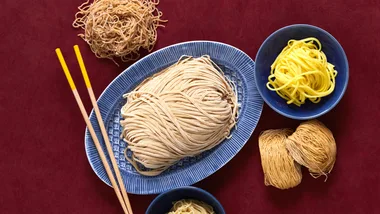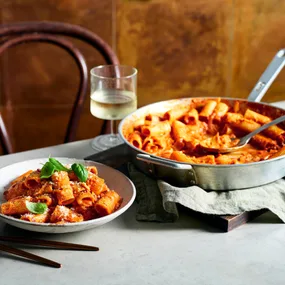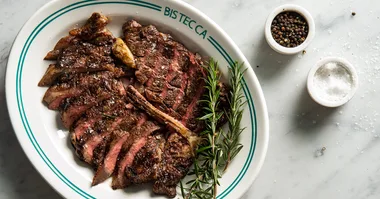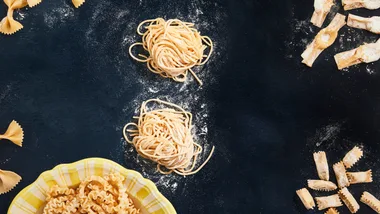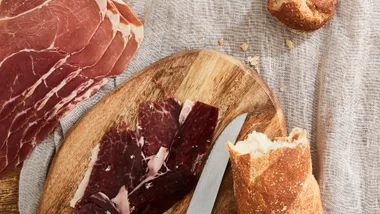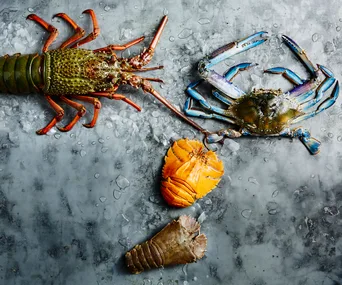Long before modern-day conveniences, such as fridges and freezers, salt was used as a preservative, allowing food to last from season to season. It’s the moisture in food, rather than the food’s age, that causes micro-organisms to grow and spoil it.
One way to prevent this is by covering food with a layer of salt. The salt works by drawing moisture from the food that could potentially be used for micro-organism growth. This method of preserving harks back to a simpler era, when all that was required from the cook was patience and a little time spent waiting.
Preserved lemons, a staple of Moroccan and North African cooking, feature heavily in stews and tagines, lending a slightly tart flavour that’s offset by sweet ingredients like dried fruit and honey. In slow-cooked dishes, the flavour is mellowed so 1-2 sliced wedges may be used. For salads and lighter recipes, ½ -1 tablespoon of chopped rind is ample.
How to sterilise jars
Not only does proper sterilisation prolong the life of the product, it’s also extremely important in preventing food-borne bacteria from causing severe illness. The aim is to finish sterilising the jars and lids at the same time the preserve is ready to be bottled; the hot preserve should be bottled into hot, dry, clean jars.
Here are three methods for sterilising jars. Always start with clean jars and lids.
METHOD 1 Put the jars and lids through the hottest cycle of a dishwasher without using any detergent.
METHOD 2 Place the jars and lids in a large saucepan, cover with water, bring to the boil then boil for 20 minutes.
METHOD 3 Stand the jars upright, without touching each other, on a wooden board on the lowest shelf in the oven. Turn the oven to the lowest possible temperature, close the oven door and leave the jars to heat through for 30 minutes.
NEXT, remove the jars from the oven or dishwasher with a towel, or from the boiling water with tongs; the water will evaporate from hot, wet jars quite quickly.
Stand jars upright and not touching each other on a wooden board, or a bench covered with a towel. Pour hot preserves into hot jars until the jars are filled to the top (in most cases, unless indicated otherwise by the recipe).
Secure lids tightly, hold jars firmly with a towel or an oven mitt while doing this, then leave preserves to cool at room temperature before labelling and storing.
How to make preserved lemons, step by step
1 Halve 8 medium lemons lengthways; carefully cut each lemon half in half again, without cutting all the way through. Open lemon halves out slightly.
2 Cut another 4 medium lemons in half crossways. Squeeze lemons over a large stainless steel or glass bowl to catch the juice; you will need 1 cup (250ml) lemon juice.

Step 2.
(Photo: Ben Dearnley)3 Add lemon halves to the bowl of lemon juice, squeezing them slightly as you add them to release some of the juice.
4 Add 1½ cups (450gm) rock salt, 5 fresh bay leaves and 1 tsp each coriander seeds and cumin seeds to the bowl, mix well; pressing down on lemons to extract more juice.

Step 4.
(Photo: Ben Dearnley)5 Pack lemon mixture into a 1.5-litre (6-cup) sterilised jar, or two smaller jars; pour enough of the juice into the jar to cover lemons.
6 Place a sealed small plastic bag filled with water on top of the lemons to keep them submerged; seal jar. Label and date jar; stand for 3 weeks before using.

Step 6.
(Photo: Ben Dearnley)A NOTE ON STORAGE
Preserves should be stored in a cool, dark place. The area you choose needs to have a constant air flow and be dry, cool and dark – when a preserve is exposed to light during storage it will discolour. If the climate you live in is hot, we and/or humid, the safest place to store preserved is in the refrigerator. Once a jar of any preserve is opened, store it in the frige.


